|
Fisher
Body - Home
Fisher Body Craftsmanship Goes to War
Fisher Body - Craftsmanship
Fisher Body - Aircraft
Fisher Body - Aircraft
Instruments
Fisher Body - Guns
Fisher Body - Tanks
Fisher Body - Miscellaneous
The Plants
Fisher Body WWII Plant Database
Cleveland Plant #1, OH Plant
Cleveland Plant #2, OH Plant
Detroit Aircraft Unit,
Detroit, MI
Detroit Die and Machine Plant
Fleetwood, Detroit, MI Plant
Flint Plant #1, MI Plant
Grand Blanc, MI Tank Arsenal
Grand Rapids, MI Plant
Lansing, MI Plant
Memphis, TN Plant
Ternstedt Manufacturing Division,
Detroit, MI
Grand Blanc Tank Arsenal Built Tanks and Tank Destroyers
Grand Blanc
built M4A2 Sherman Tank Photos
Grand Blanc
Built M4A3 Tank Photos
Grand
Blanc M10 Tank Destroyer Photos
Ternstedt
Manufacturing Division of Fisher Body - General Motors Corporation in
World War Two
Detroit, MI
1917-1983
1983-1994 as part of Fisher-Guide and then the Inland-Fisher-Guide
Division.
This page updated 3-28-2022.
In 1911 Alvar Ternstedt invented a device for
use in the new automobile industry that manually rolled windows up and
down in the doors of the vehicle using a hand crank. This is known
in the industry as a window regulator. Hand crank window regulators
have given way to electrically powered units. In some form
however, they
resemble the one invented by Alvar Ternstedt.
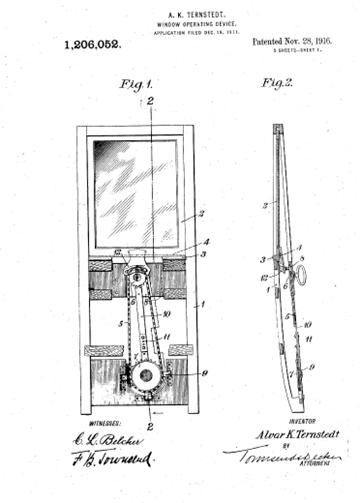
The patent was issued on November 28,1916.
The window regulator used a bicycle chain to move the window up and down
inside a wooden door. Two other inventors of the era, Orville and
Wilbur Wright also used bicycle chains in their aircraft to transfer the
power from the engine to the propellers. It was state-of-the-art
technology at the time.
In 1917, in order to bring his new product to
market, Ternstedt had to enlist the financial assistance of the Fisher Brothers,
who already owned the world's largest auto body building company,
Fisher Body. The Ternstedt Manufacturing Company was formed in
1917 with Alvar Ternstedt as the chairman of the new company. Four
Fisher brothers and three Fisher stockholders formed the rest of the
board of directors of the new company.
Six months later. Alvar Ternstedt passed away.
In 1920 Fisher Body purchased the company. When General Motors
purchased Fisher Body in 1926, Ternstedt, the largest manufacturer of
automotive hardware, was made a division of Fisher Body.
At times General Motors did not seem to know
where to place it in the company's organization, as sometimes it was
part of Fisher Body, and other times its own stand-alone division.
The 1943 and 1944 General Motors Annual
Reports list the Ternstedt Manufacturing Division along with the other
GM Divisions. In the 1945 GM Annual Report, Ternstedt is missing
from that list. The Army-Navy E Award was presented to the Fisher
Body Ternstedt Manufacturing Division during the war. In 1958
Ternstedt became its own Division within General Motors. In 1968
it reverted back to being part of Fisher Body until it was dissolved in
1983. Then it was folded into the new Fisher Guide Division of GM
until it became part of Delphi in 1995. By that time, all
vestiges of its former division had disappeared.

The Fisher Body Ternstedt Manufacturing
Division, Division #9, Detroit, won the Army-Navy E Award two times
during World War Two.
The Fisher Body Ternstedt Manufacturing Division #3, and Plant #16,
Detroit, won the Army-Navy E Award two times during World War Two.
Fisher Body Ternstedt Manufacturing
Division World War Two Production Statistics: 168,000 Sperry aircraft
gyro horizons, 124,000 Sperry aircraft directional gyros, 46,615 Bendix
remote reading compass
transmitters, 76,291 Bendix remote reading compass receivers, 4,724 Bendix
air position computers, 4,716 Bendix air position pumps,
4,725 Bendix air position right angle drives, 4,962 M5 tank turrets,
1,798 M8 tank turrets, 600 T17 Staghound armored car anti-aircraft
turrets, 3,553 M24 tank turrets, 20 LVT 75mm howitzer turrets, various
machined forgings and die castings for the B-25
program, various machined parts for the B-29 program, various
parts for the XP-75 program, M4 Sherman parts, five-inch naval gun
breech housing parts, 90mm anti-aircraft gun parts, 20mm anti-aircraft
gun parts, 75mm tank gun parts, XB-19 aircraft bomber parts, 75mm shell
parts, Dzus fasteners, incendiary bombs, and cutting tools.
As the above listing shows, the Ternstedt
Manufacturing Division built everything from precision aircraft
instruments, with extremely small parts, to welded steel tank
turrets. Like many manufacturers during World War Two, it built
needed war material totally foreign to its peace time products.
Aircraft Instruments:
Ternstedt built both Sperry Instruments and Bendix
aircraft instruments during World War Two. This was a total
departure from the automotive hardware the division had been producing
before the war. Many of the instruments needed to be assembled in
air-conditioned rooms.
Sperry Instruments:
Sperry Instruments had been building gyro
horizons and directional gyros in semi-laboratory conditions in its
plants in New York. When the U.S. Army Air Force first contracted
with Ternstedt in February 1942, the Division decided to use automotive
assembly methods to meet the large number of instruments needed for the
war effort. There were 303,221 aircraft built during World War
Two. Each one required a minimum of one directional gyro and a
gyro horizon. Trainers, cargo aircraft, and bombers with two
pilots needed two of each. The only way to meet the demand for the
number of instruments was to build them with mass production methods.
Initially, there were 3,341 Ternstedt workers involved to make these two
products. As the program progressed, the number of employees was
reduced to 1,473 in June 1944.
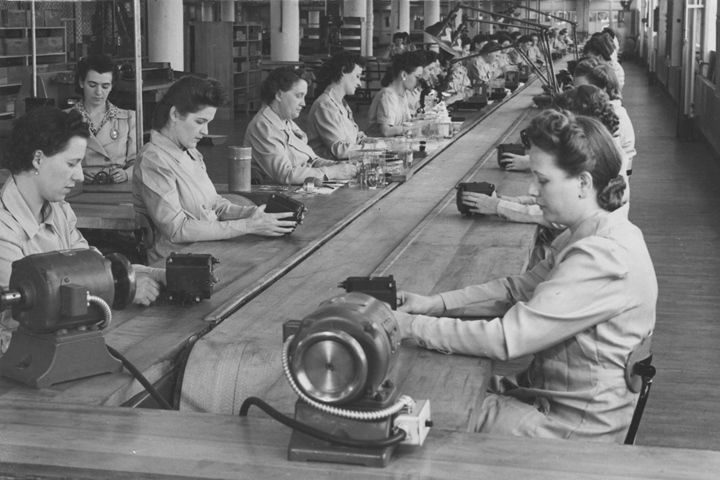
This is the Ternstedt directional gyro
assembly line. Many of the operations had to be done in
air-conditioned rooms to maintain tolerances. The assembly line
only shows a small proportion of the workers needed to build the Sperry
instruments. Most of the employees not seen in the photo were
producing all of the parts that went into the final assembly.
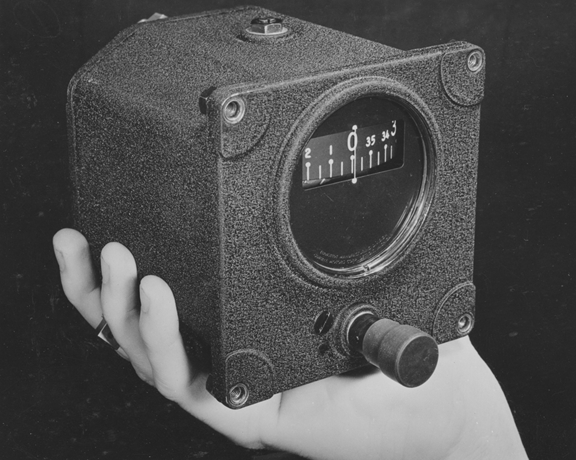
This is the directional gyro that the
workers are assembling in the photo. This was a very important
instrument as it indicated the direction the pilot was flying. It
had to be accurate and reliable.
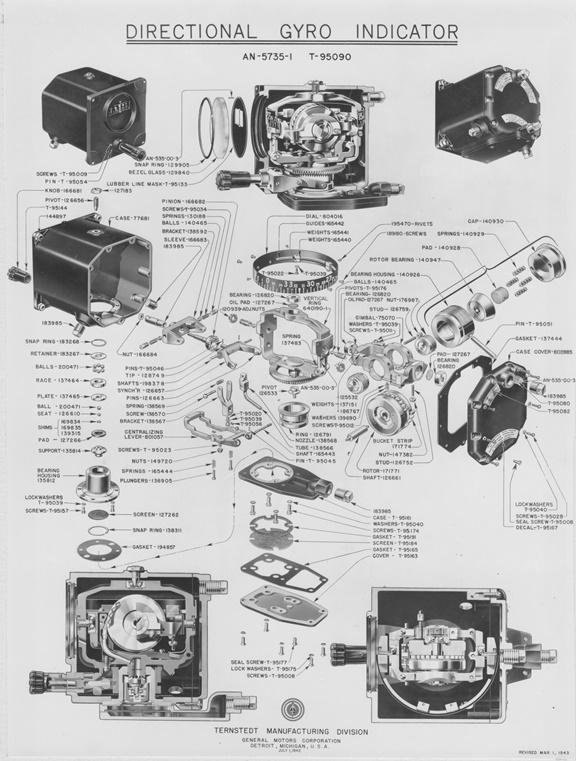
This diagram shows the complexity of the
instrument and all of the small parts that went in to it.
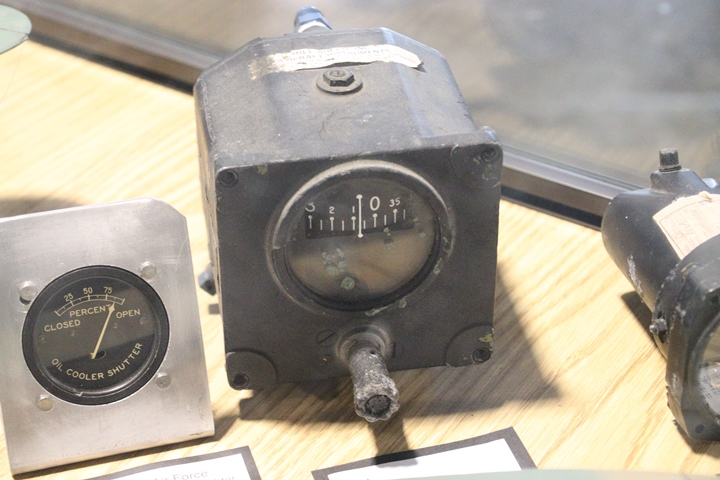
This Ternstedt-built directional gyro is on
display at the Regional Military Museum in Houma, LA. Author's
photo added 3-28-2022.
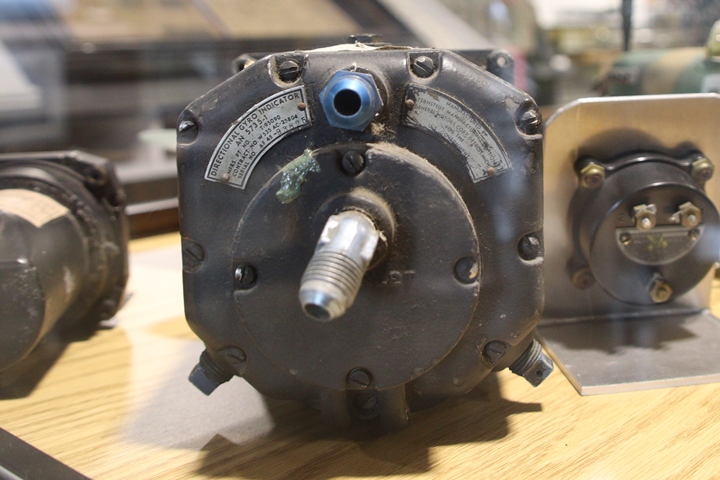
Author's photo added 3-28-2022.
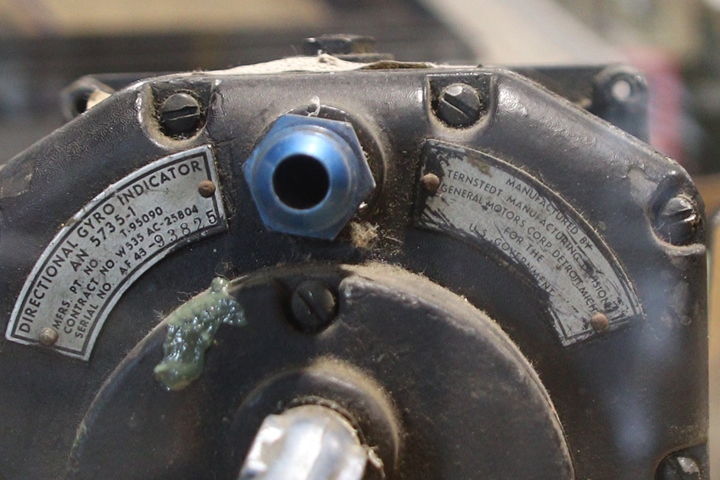
Author's photo added 3-28-2022.
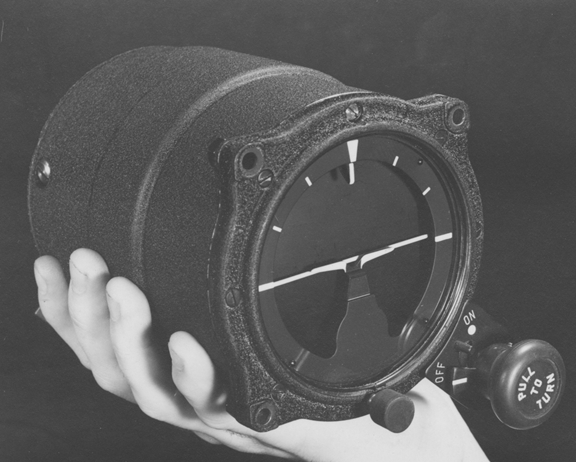
The gyro horizon, or artificial horizon as
it is known to pilots, is used during instrument conditions. It is
used to keep the aircraft in level flight when the ground cannot be seen
due to weather conditions. It also has to be accurate and
reliable.
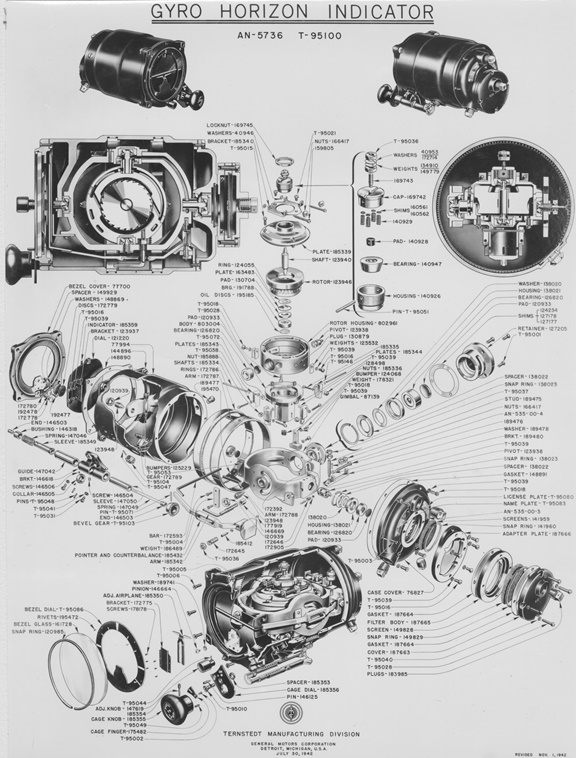
It is also a complex instrument with many
small parts.
Table 1 - Ternstedt World War Two Shipments of Sperry Gyro Horizons and Directional
Gyros
This table shows both the contracted amounts by month and
year and the actual production. No monthly data is available
for April through July 1945. Only the total number
of instruments built by July 1945 is available. |
|
Date |
Gyro horizon |
Directional Gyro |
|
1942 |
Contract |
Actual |
Contract |
Actual |
|
August |
206 |
206 |
183 |
183 |
|
September |
764 |
764 |
681 |
681 |
|
October |
1,913 |
1,913 |
1,092 |
1,092 |
|
November |
3,000 |
3,000 |
2,044 |
2,044 |
|
December |
4,412 |
4,412 |
3,314 |
3,314 |
| 1943 |
|
|
|
|
|
January |
5,520 |
5,520 |
4,604 |
4,604 |
|
February |
5,151 |
5,151 |
6,176 |
6,176 |
| March
|
4,976 |
4,976 |
5,785 |
5,785 |
| April
|
7,170 |
7,170 |
6,512 |
6,512 |
| May
|
5,664 |
5,664 |
6,168 |
6,168 |
| June
|
6,000 |
6,344 |
6,000 |
6,153 |
| July
|
6,000 |
6,024 |
6,000 |
6,080 |
|
August |
6,000 |
6,000 |
6,000 |
6,040 |
|
September |
6,000 |
6,002 |
5,500 |
5,506 |
|
October |
6,000 |
6,000 |
5,000 |
5,000 |
|
November |
6,000 |
6,000 |
4,300 |
4,300 |
|
December |
5,500 |
5,500 |
4,300 |
4,300 |
| 1944 |
|
|
|
|
|
January |
5,000 |
5,000 |
3,500 |
3,500 |
|
February |
4,000 |
4,000 |
2,750 |
2,750 |
| March
|
3,000 |
3,000 |
2,750 |
2,750 |
| April
|
2,750 |
2,750 |
2,750 |
2,750 |
| May
|
2,750 |
2,750 |
2,750 |
2,750 |
| June
|
2,750 |
2,750 |
2,750 |
2,750 |
|
Totals |
100,526 |
100,896 |
90,909 |
91,188 |
| |
|
|
|
|
| July
1944 - March 1945 |
25,174 |
25,174 |
24,591 |
24,591 |
|
Totals though March 1945 |
125,700 |
126,070 |
115,500 |
115,779 |
|
Totals though July 1945 |
|
168,000 |
|
124,700 |
Bendix Instruments: The USAAF
contracted with Ternstedt to produce two of the three components of the
Bendix Remote Reading Compass. These were the transmitter and the
indicator. The third component, the inverter, was not produced by
Ternstedt. When production began on this project there were 682
employees dedicated to this project. This was later reduced to 388
in June 1944.
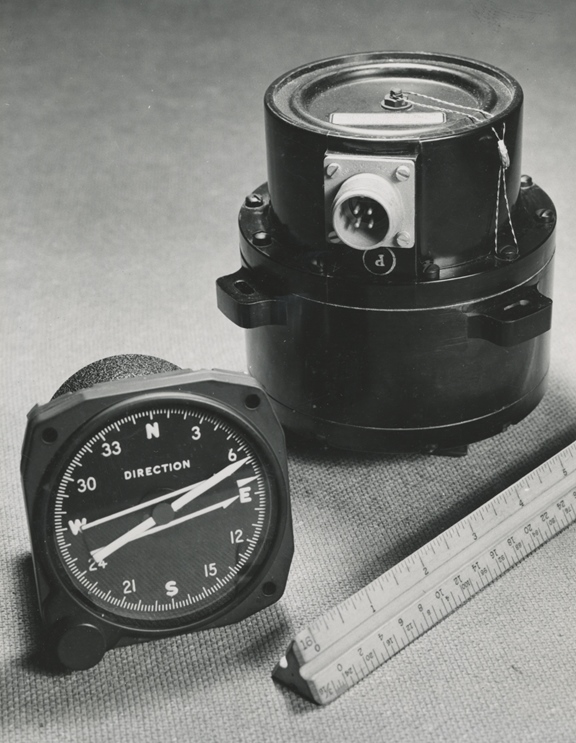
The indicator is in the lower left and the
transmitter in the upper right.
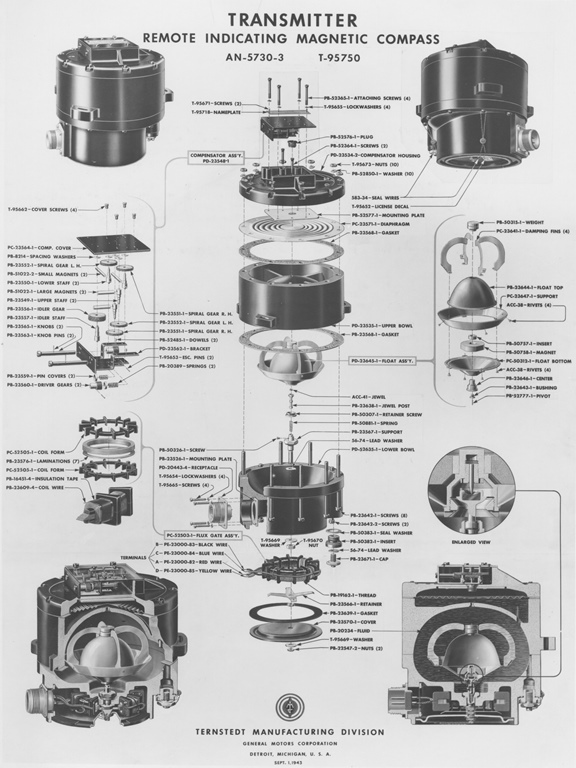
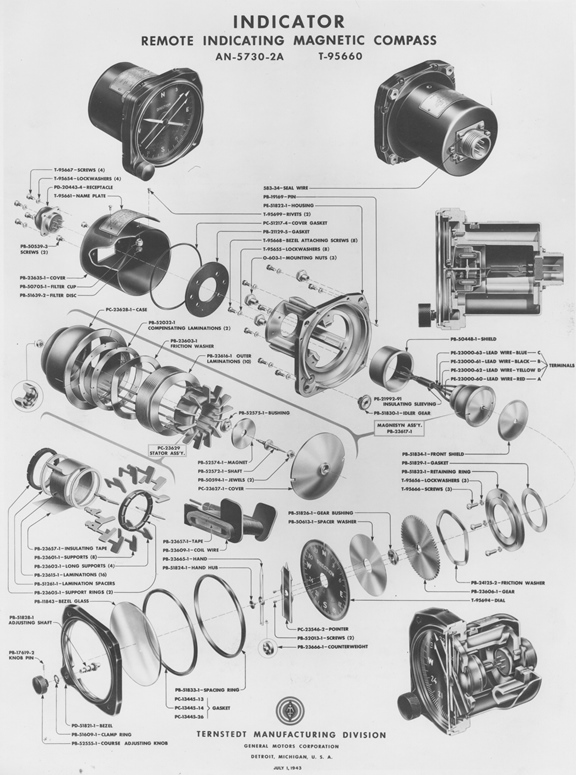
Table 2 - Ternstedt World War Two Shipments of Bendix Remote
Reading Transmitters and Indicators
This table shows both the contracted amounts by month and
year and the actual production. No monthly data is available
for July 1944 through July 1945. Only the total number
of instruments built by July 1945 is available. |
| Date |
Transmitters |
Indicators |
| |
Contract |
Actual |
Contract |
Actual |
|
1943 |
|
|
|
|
|
July |
200 |
439 |
200 |
386 |
|
August |
900 |
1,259 |
600 |
423 |
|
September |
1,900 |
1,344 |
1,090 |
954 |
|
October |
3,000 |
3,000 |
2,600 |
3,900 |
|
November |
3,000 |
3,000 |
4,000 |
4,227 |
|
December |
3,000 |
3,000 |
4,000 |
4,000 |
|
1944 |
|
|
|
|
|
January |
3,000 |
3,000 |
3,000 |
3,000 |
|
February |
3,000 |
3,000 |
3,000 |
3,000 |
|
March |
2,500 |
2,500 |
3,500 |
3,500 |
|
April |
2,500 |
2,500 |
3,500 |
3,500 |
|
May |
2,500 |
2,500 |
4,000 |
4,000 |
|
June |
2,500 |
2,500 |
6,500 |
6,500 |
|
Totals |
28,000 |
28,042 |
35,990 |
37,390 |
|
Totals though July 1945 |
|
46,615 |
|
76,291 |
The Eclipse-Pioneer Division of Bendix
Aviation Corporation developed a new navigation method in World War Two. It contracted with the Ternstedt
Manufacturing Division of Fisher Body to build some of the components of
the system. The Ternstedt-built AN 5841-1 Air Position Computer
was part of the larger 12580-3-B Air Position Indicator System Computer
which gave the miles flown and the current longitude and latitude of the
aircraft in the air. The longitude and latitude of the aircraft
would be set at its base before takeoff. Once airborne, the
navigator then plotted the aircraft's position on a map that factored in
wind direction and velocity. This is the wind vector and when
plotted on the map gives the ground position of the aircraft. This
was a huge advancement in navigation during World War Two. This
system was introduced into late model B-29s that had to fly from the
Tinian, Guam, and Saipan to bomb Japan. This navigation system was
on the B-29 Enola Gay as it flew the 1,361 miles over open ocean to
Hiroshima, Japan.
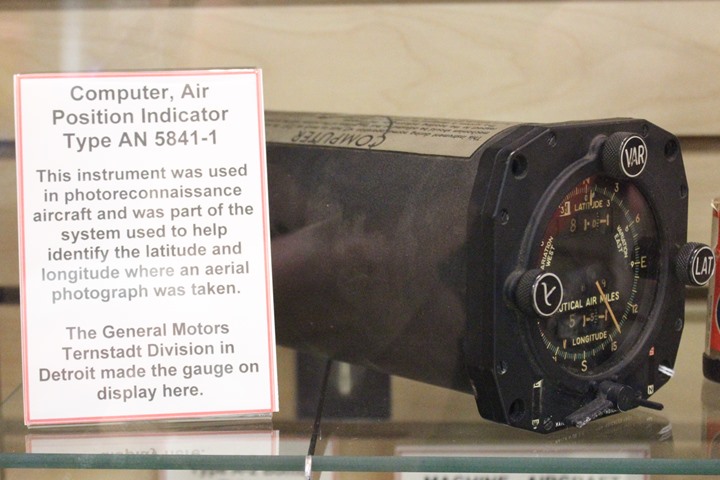
Ternstedt built 4,571 Bendix Air Position
Indicators. This rare example of the Ternstedt-built AN 5841-1 Air
Position Indicator is on display at Michigan Military Technical and
History Museum. Author's photo.
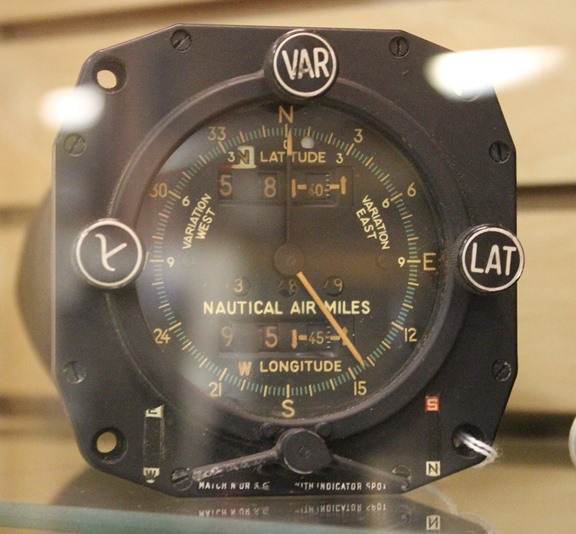
The computer was set to the proper longitude
and latitude at the aircraft's home base just before departure.
The computer then calculated the aircraft's position in the air based on the
initial setting. The navigator then took the readings from this
instrument and applied the wind vector. This then gave the ground
position of the aircraft. Author's photo.
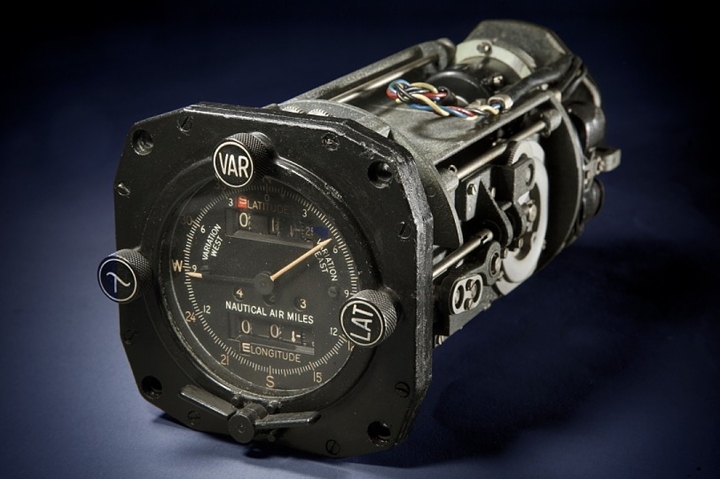
This and the following photo show some of
the internal parts of the AN 5841-1. Photo courtesy of the
National Air and Space Museum.
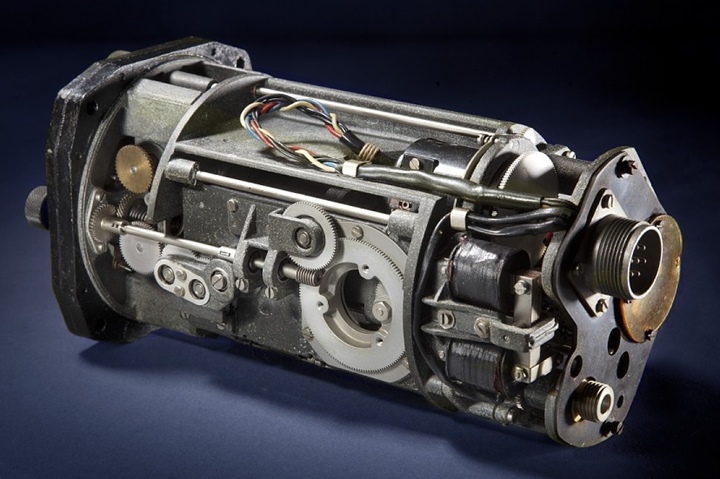
Photo courtesy of the National Air and Space
Museum.
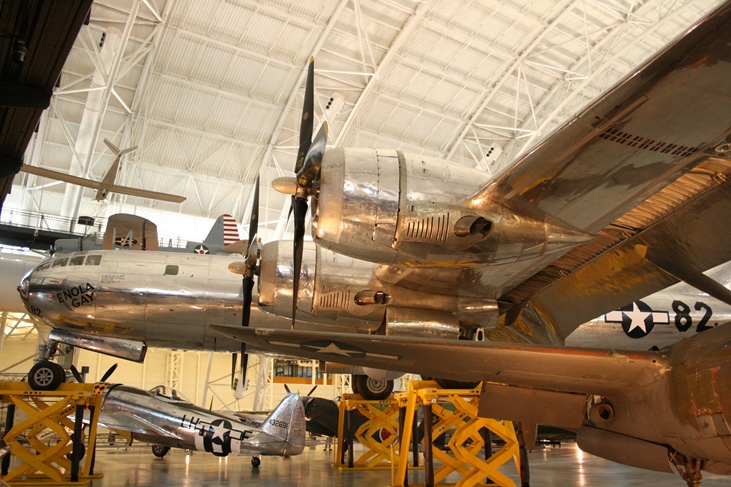
The Enola Gay had an AN 5841-1 Air Position
Computer in it as part of the larger 12580-3-B Air Position Indicator
System Computer. It may still be in the restored aircraft on
display at the Udvar-Hazy Center of the National Air and Space Museum. Author's photo.
Because of Ternstedt's excellent performance
and experience in building Sperry and Bendix instruments, the Army Air
Force requested in April 1944 that it also build parts of the 12580-3-B
Air Position Indicator System Computer. This was the highest form
of compliment the division could receive.
The 12580-3-B Air Position Indicator System
Computer was composed of four main components. They were the
computer, controller, air mileage pump, and amplifier. There was also an
optional right angle drive for the system. The Ternstedt
Manufacturing Division was contracted by Bendix to build three of these
components. Table 2 gives the build schedule for the computer,
pump, and right angle drive.
Table 3 - Proposed Build
Schedule for Bendix 12580-3-B Air Position Indicator System
Computer Components
Based on a Bendix Purchase Order dated 6-9-1944.
The actual build was 4,724
computers, 4,716 pumps, and 7,425 right angle drives. |
|
Date |
Computer and Air Position Pump |
Right Angle Drive |
|
1944 |
|
|
|
October |
50 |
100 |
|
November |
200 |
400 |
|
December |
350 |
700 |
|
1945 |
|
|
|
January |
500 |
1,000 |
|
February |
525 |
1,050 |
|
March |
525 |
1,050 |
|
April |
525 |
1,050 |
|
May |
525 |
1,050 |
|
June |
525 |
1,050 |
|
July |
525 |
1,050 |
|
August |
321 |
642 |
|
Totals |
4,571 |
9,142 |
XP-75 Project: Ternstedt provided
a number of components for the Fisher XP-75 built in Cleveland, OH.
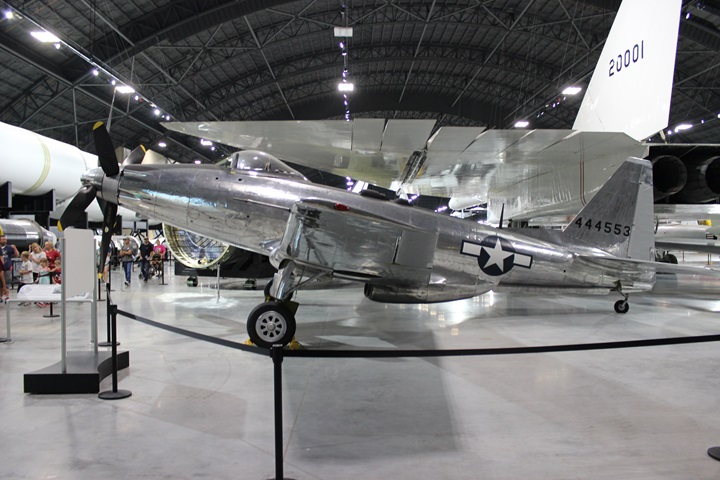
The only surviving Fisher XP-75 is on
display at the National Museum of the United States Air Force in Dayton,
OH. Author's photo.
Tank and Landing Vehicle, Tracked (LVT)
Turrets: Ternstedt
specialized in building turrets for the Cadillac light tanks. It
built 4,962 M5 light tank turrets, 1,798 M8 self-propelled
gun turrets, and 3,553 M24 light tank turrets. It also built 600 T17
anti-aircraft gun turrets for Chevrolet and 20 75mm LVT turrets while
transferring the tooling and work to Fisher Body Grand Rapids in
February 1944.
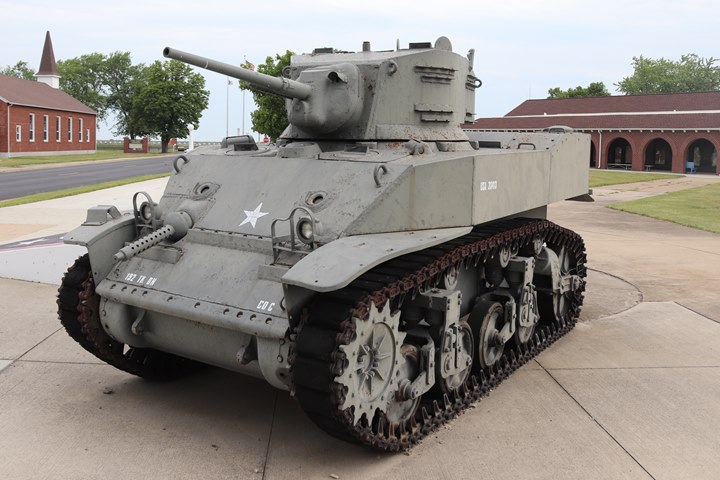
This Cadillac-built M5A1 is on display at
the Ohio National Guard training base at Port Clinton, OH. The
three photos of this tank show three sides of the Ternstedt-built
turret. Author's photo.
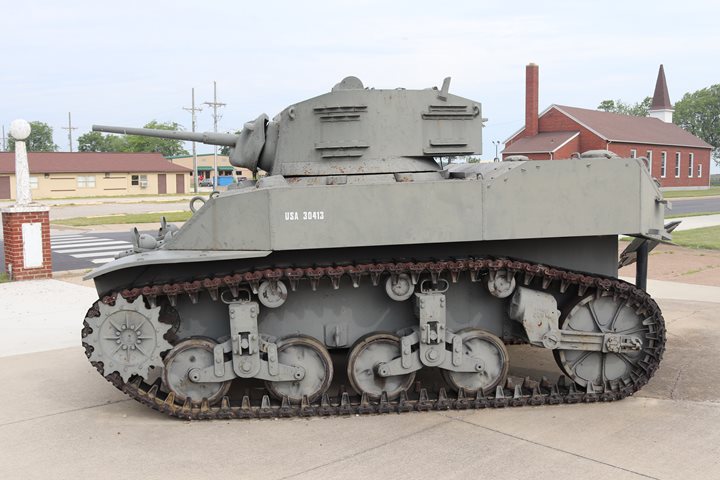
Author's photo.
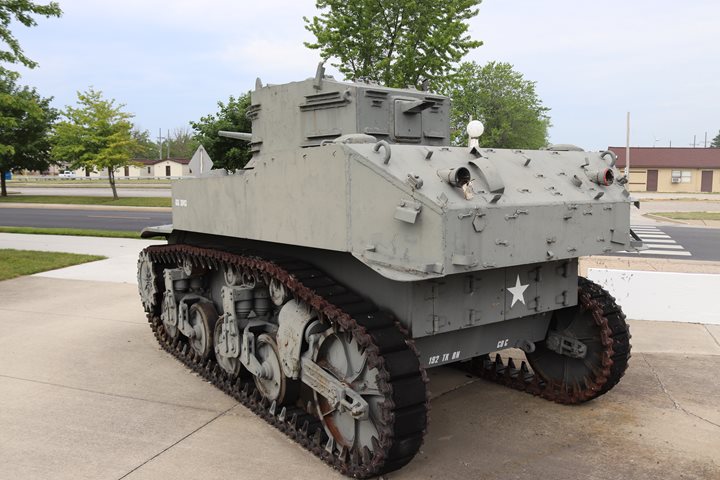
Ternstedt produced 4,962 of the M5 tank
turrets. Author's photo.
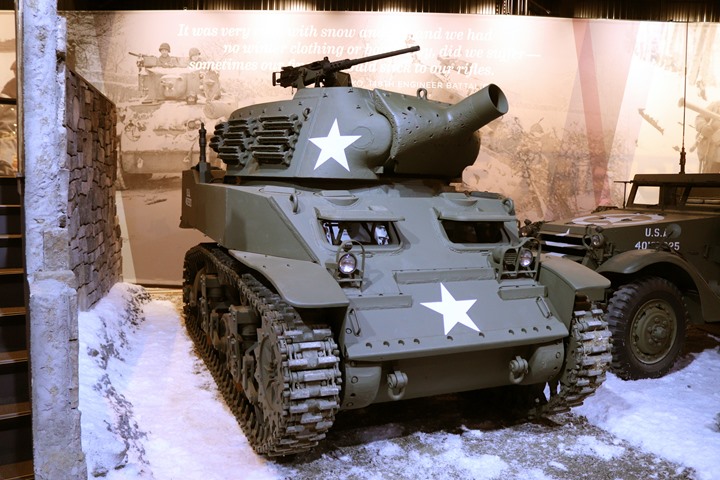
Cadillac also produced the M8 75mm Gun Motor
Carriage during World War Two. Ternstedt manufactured 1,798
turrets for this self-propelled howitzer. Author's photo.
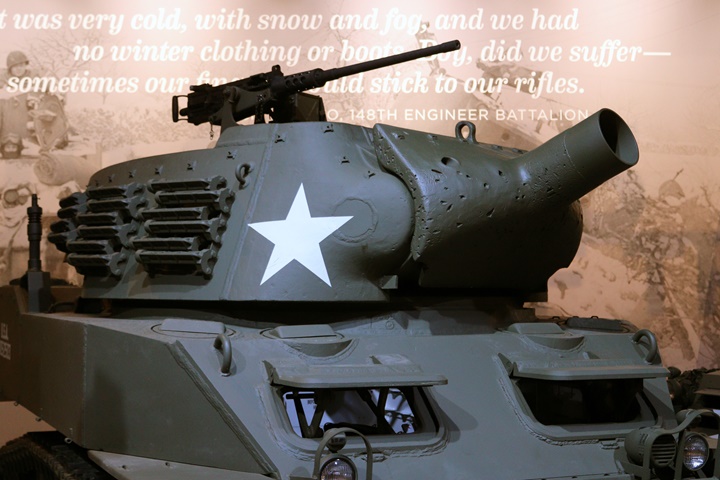
Author's photo.
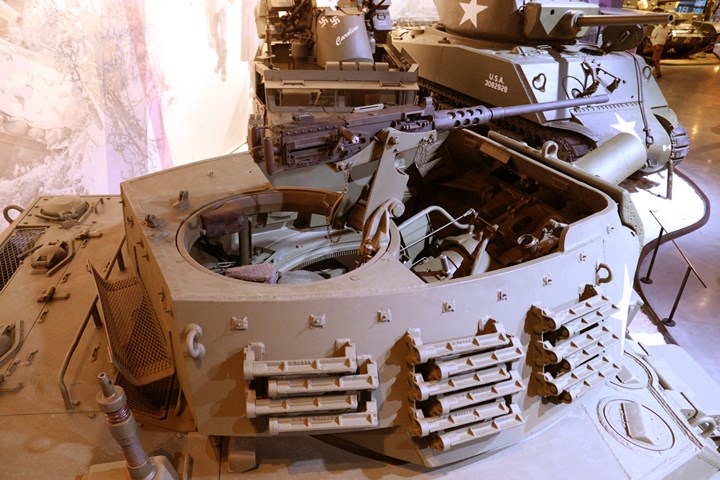
This photo shows that the M5 and M8 turrets
were constructed of heavy formed steel plates and welded together.
Author's photo.
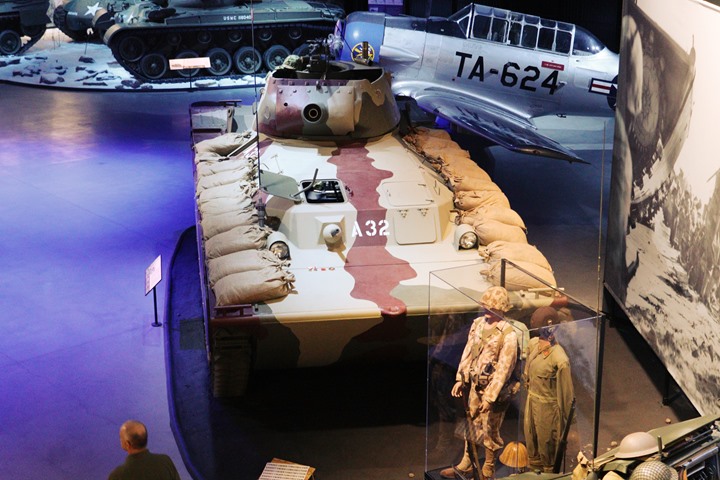
In February 1944, the U.S. Navy requested 2,596
M8 75mm howitzer turrets to arm its LVTs. Due to the work load at
Ternstedt, it was unable to build these turrets and the tooling and work
was transferred to Fisher Body Grand Rapids. However, Ternsdedt
produced twenty turrets on an emergency basis to provide the Navy with
turrets while Grand Rapids began production. This LVT-(A)4 is on
display at the American Heritage Museum in Hudson, MA. Author's
photo.
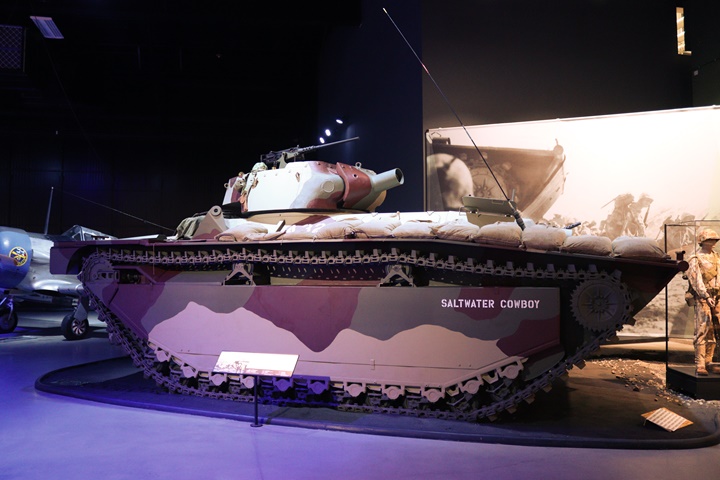
Author's photo.
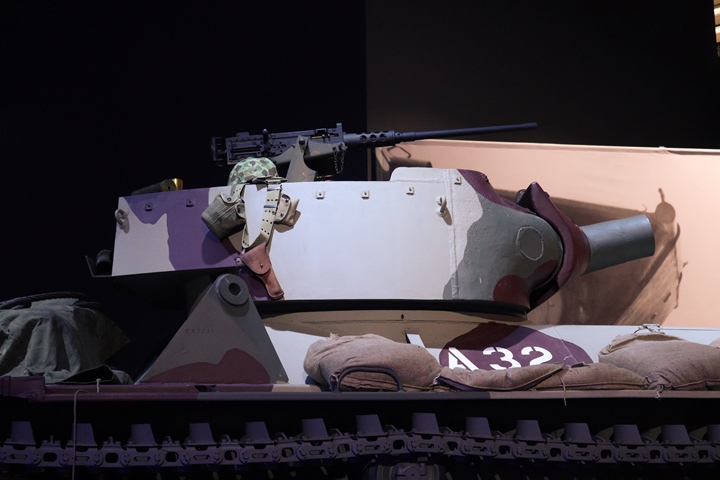
Author's photo.
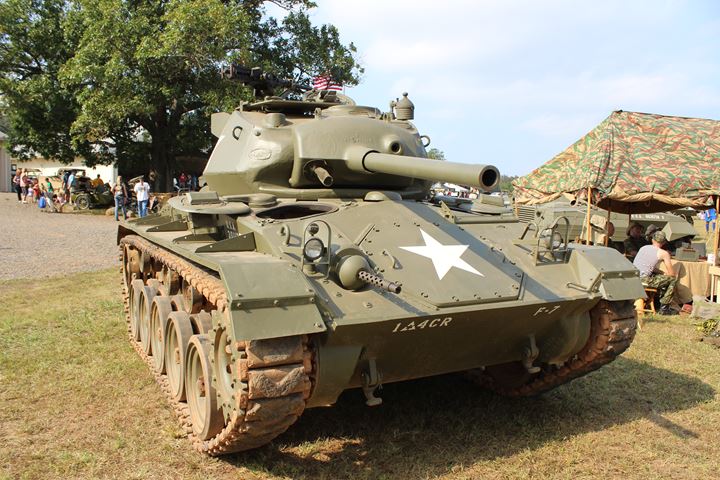
After production of the M5 light tank
stopped at Cadillac, it began producing the M24 Chaffee light tank with
Ternstedt turrets. Author's photo.
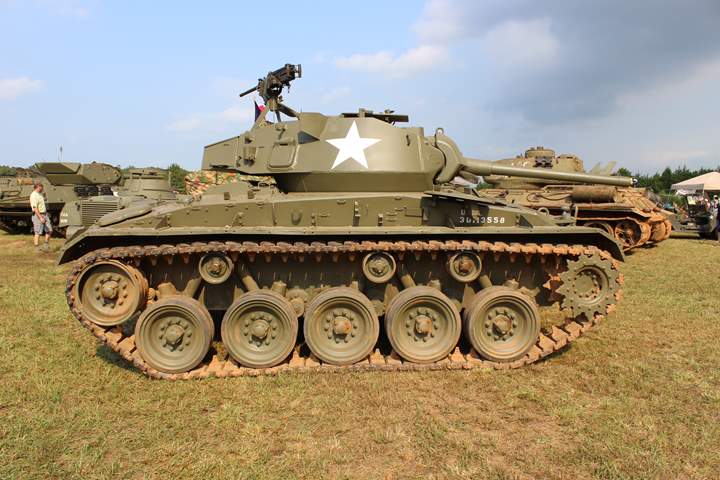
Author's photo.
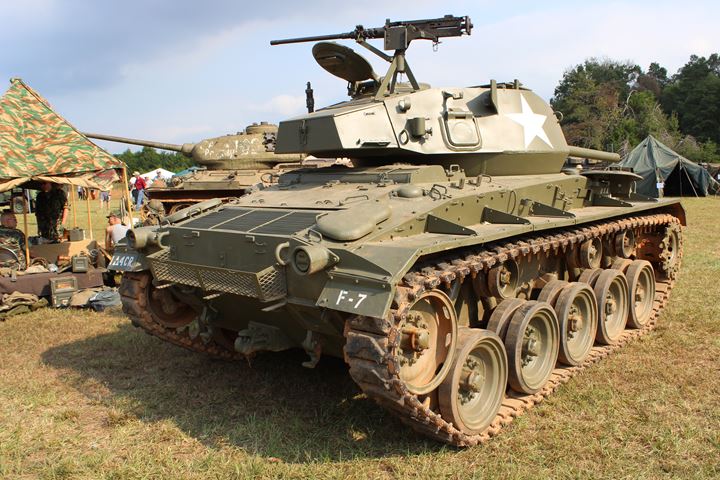
Author's photo.
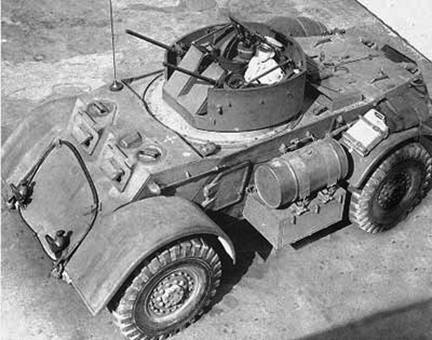
The T17E2 was the anti-aircraft version of
the Chevrolet-built Staghound armored car for the British.
Ternstedt built 600 turrets for the T17E2. This turret was of
sheet metal construction.
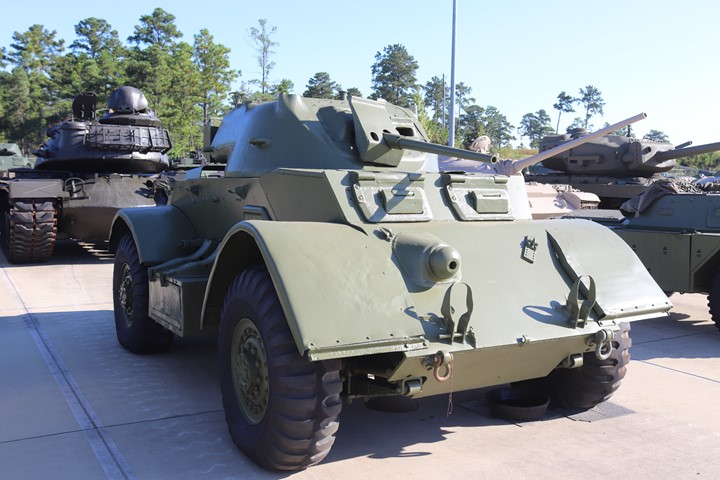
This photo shows a restored T17E1 Staghound
with a 37mm gun turret. The construction of the turret is
different than the T17E2. Author's photo.
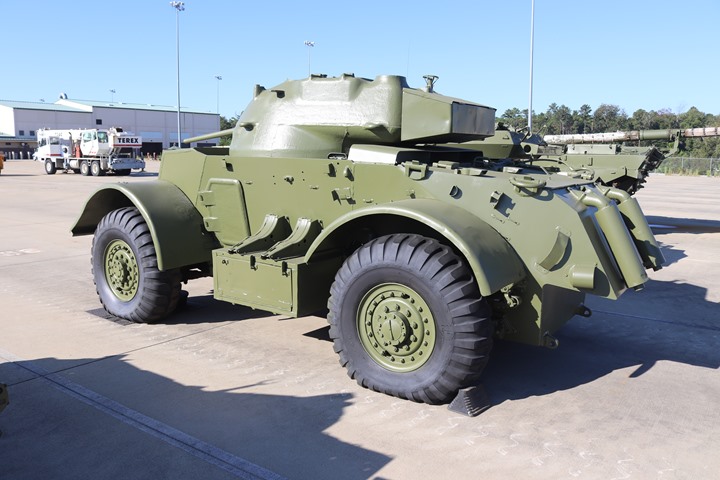
Author's photo.
Other Ternstedt World War Two Products:
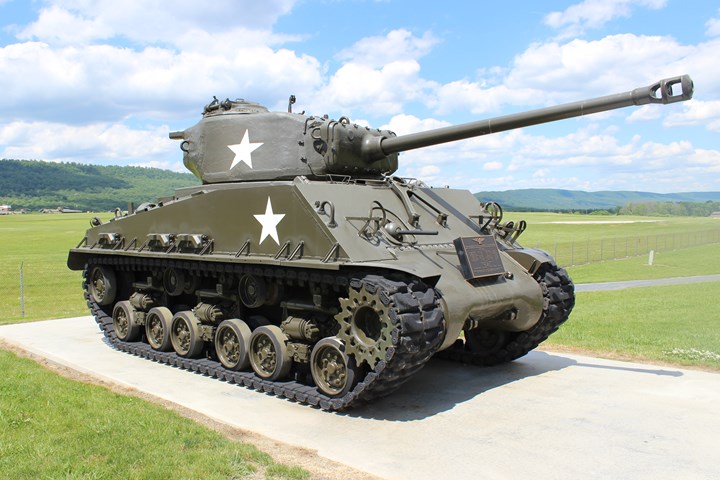
Ternstedt furnished components to the Fisher
Body Grand Blanc, MI tank plant for the M4A3(76)HVSS Sherman tank.
Author's photo.
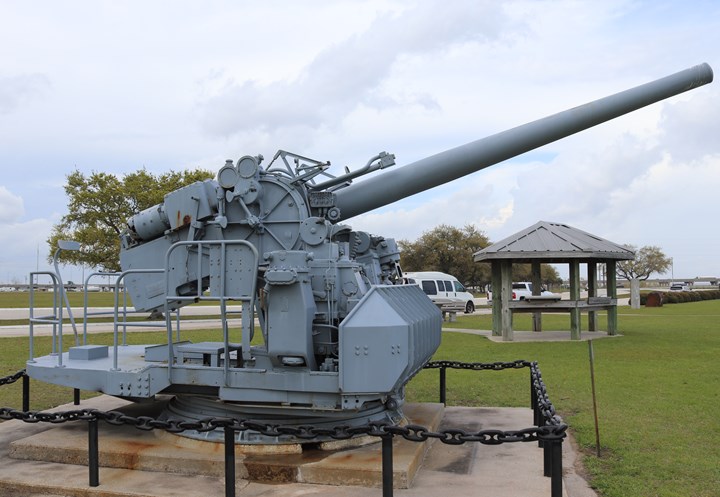
Fisher Body built 6,342 gun breech housings
for the five-inch naval gun during World War Two. Ternstedt made
components for the breech which was built in the Detroit Die and Machine
Plant. Author's photo.
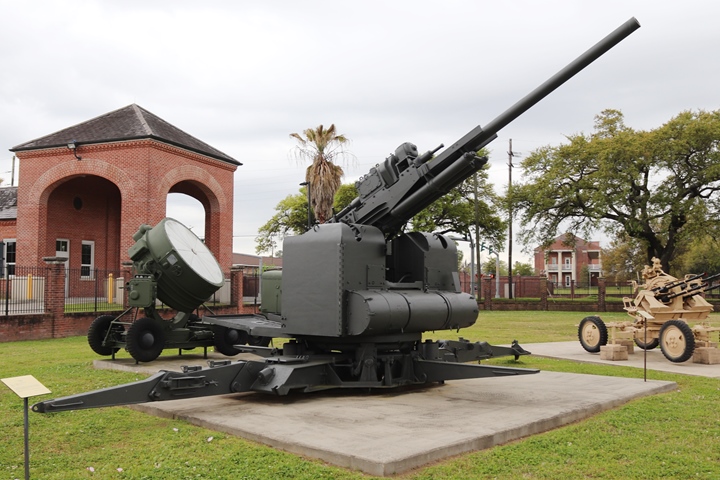
Fisher-Body Pontiac built 2,359 90mm
anti-aircraft guns with Ternstedt-built parts. Author's photo.
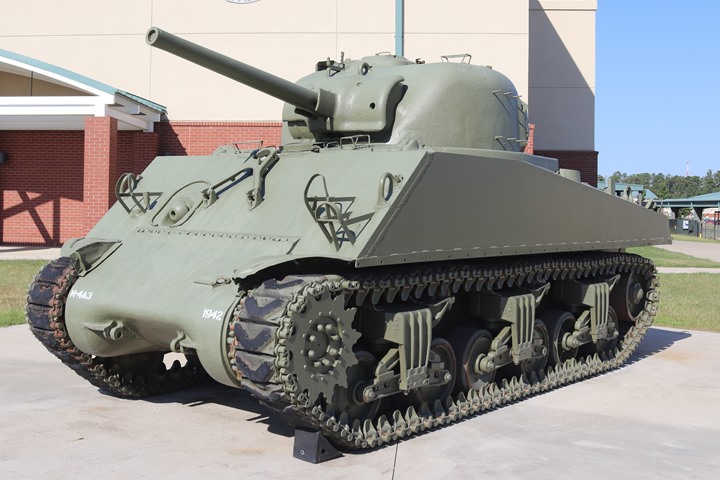
Oldsmobile built 21,849 75mm cannons for the
M3A(75)VVSS Sherman tank. Ternstedt was a supplier to Oldsmobile
for components in the weapon. Author's photo.
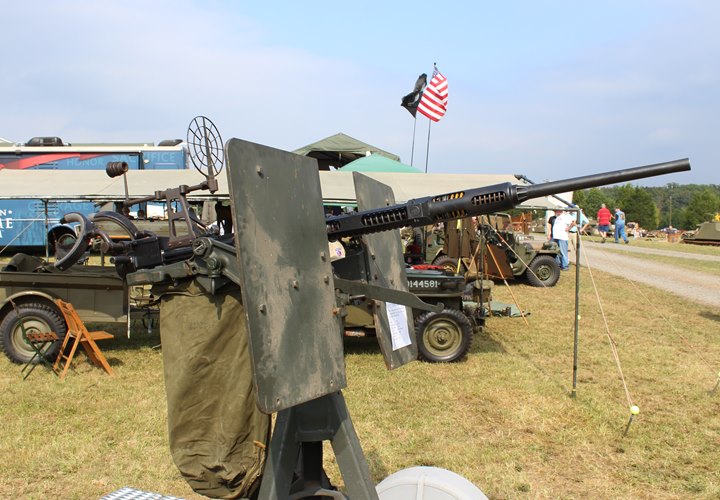
The Pontiac Motor Division built 47,026 20mm
anti-aircraft cannons for the U.S. Navy that included parts built by the
Ternstedt Manufacturing Division of Fisher Body.
The Ternstedt Trenton, NJ Plant:
This plant was built in 1937 to provide more capacity for Ternstedt.
It was also close to several General Motors assembly plants on the east
coast. During World War Two General Motors folded the Trenton
plant into the Eastern Aircraft Division which built Grumman designed
Wildcat fighters and Avenger torpedo aircraft. Trenton was the
final assembly point for 7,546 TBM torpedo bombers.
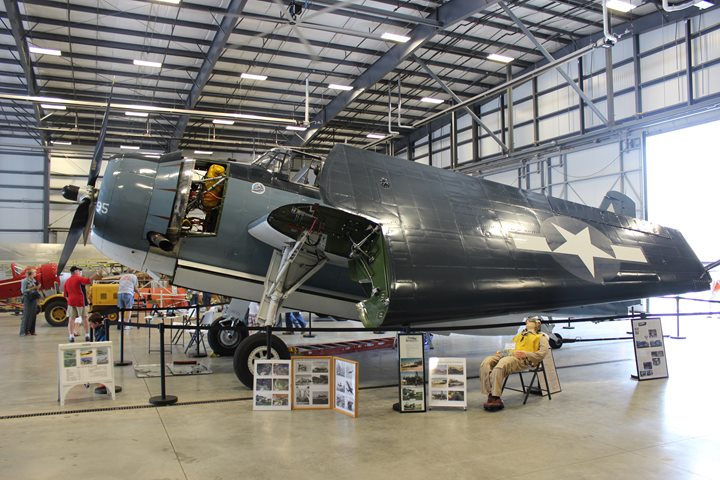
The TBM was the largest aircraft that
operated from U.S. Navy aircraft carriers for most of World War Two.
The Ternstedt Trenton plant went from making automotive hardware parts
in 1941 to the huge TBM in 1942. Author's photo.
|







































